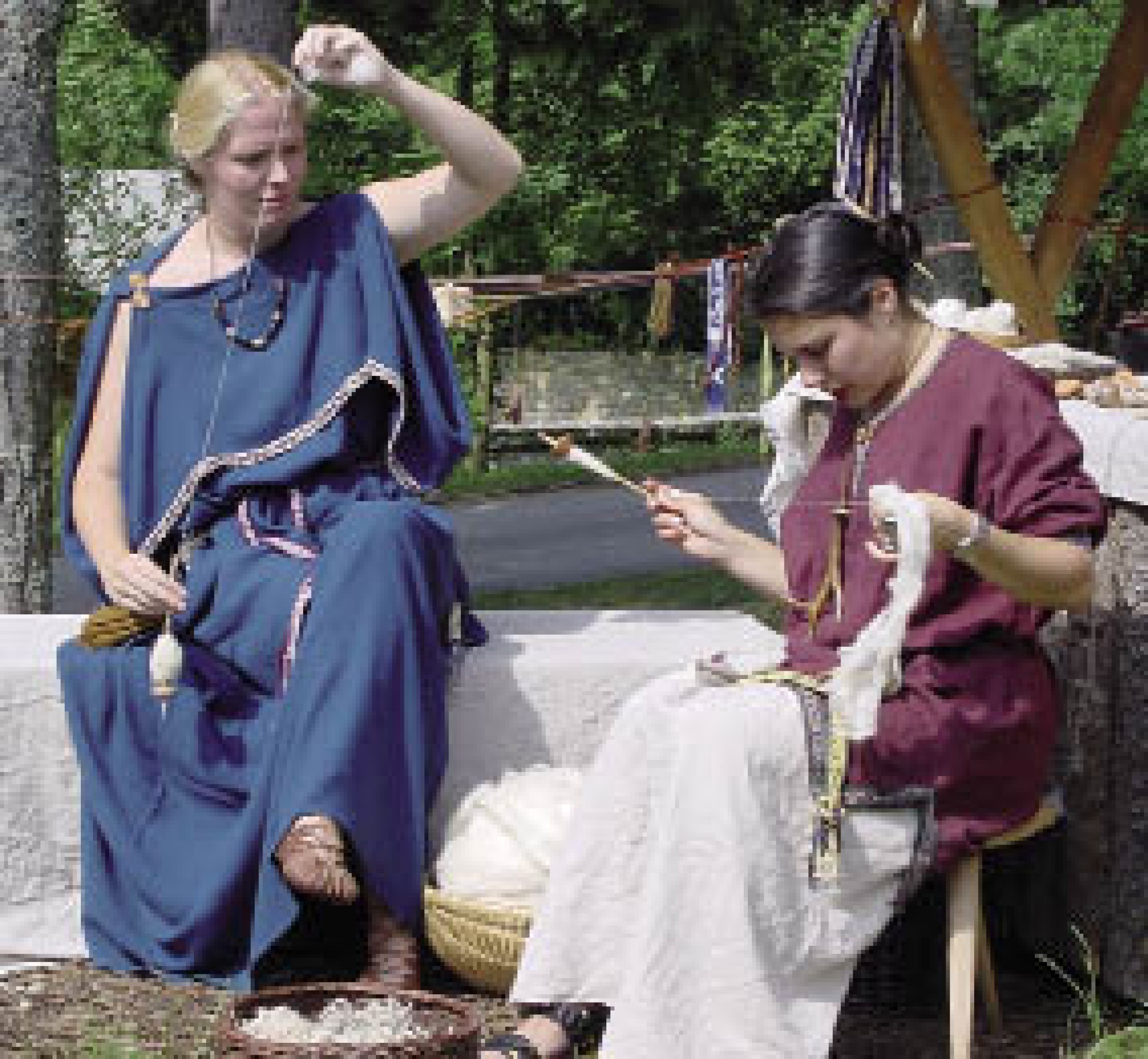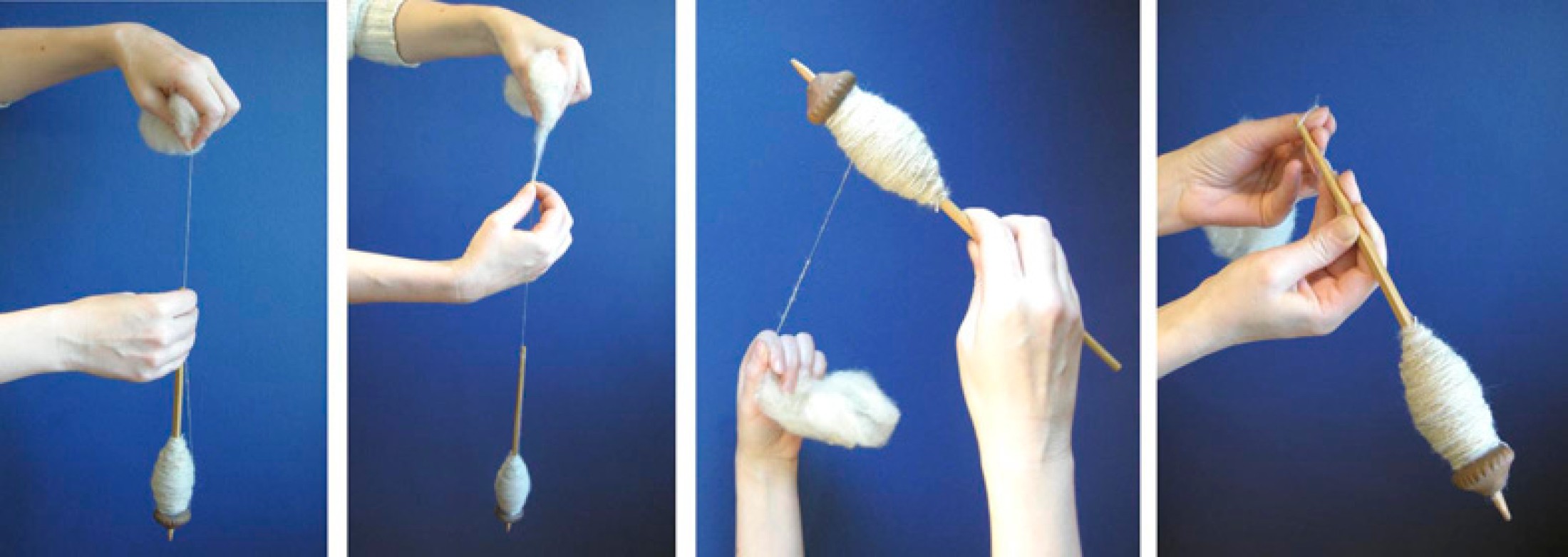Technology used to produce textiles in Hallstatt
The textiles found in the Hallstatt mines were produced using warp-weighted looms. The individual yarns were made with hand spindles. Even as early as the Bronze Age it was possible to create fine patterns in single-color materials by using yarns spun in different directions. Colored stripes and check patterns were also popular. Decorative ribbons made with ribbon weaving or tablet weaving were also used.Warp-weighted looms
Spinning with a hand spindle
Ribbon and tablet weaving
Results of archaeological experiments
Warp-weighted looms
Large woven textiles were made using a simple warp-weighted loom. Bronze Age and Iron Age loom weights found in settlements provide archaeological proof that this type of loom was used. There are also depictions from the time showing people spinning and sitting at warp-weighted looms. One such image has been found on a vessel from the Hallstatt Period uncovered in Sopron, Hungary. When weaving on a warp-weighted loom the warp ends are cut to the right length, hung over the top of the loom and weighed down with loom weights.Such looms can be used to create a range of different woven structures still used today. The simplest of these structures is plain weave. Finds from Hallstatt show that twill weave was first used in Central Europe during the Middle Bronze Age. In the Iron Age decorative variations such as herringbone twill and diamond twill were also used.
Spinning with a hand spindle
In prehistoric times, even the finest of yarns were spun using a hand spindle - a thin wooden stick with a spindle whorl to generate momentum. Hand spindles have been used in our region since the start of the Neolithic Age, 7500 years ago. It was not until the end of the Middle Ages that the hand spindle was slowly replaced by the foot-driven spinning wheel. Since even the prehistoric yarns found in Hallstatt vary in quality, similar to combed yarn and carded yarn used today, it can be assumed that a range of different preparation measures were employed.Woolen fleece gently teased apart and loosely spun forms a warm, soft yarn; combed wool which is tightly spun results in a smooth, shiny yarn suitable for making hard-wearing materials. Spinning involves taken a yarn that has already been started and wrapping it around the hand spindle. The spindle is then set in motion and the wool, held in one hand, is slowly drawn out into a yarn of even thickness. Once this yarn has reached a certain length it is rolled together and the whole process starts again.
Ribbon and tablet weaving
Ribbon and tablet weaving were often also used to make laces. Both techniques are ideal for creating thin but strong braids of this kind. Ribbon weaving uses a simple weaving grid or braiding bars. Patterns are created using warp in a range of different colors.Tablet weaving, on the other hand, is a far more complex process in which the warp ends (mostly dyed in different colors) are threaded through holes in square tablets. As these tablets turn and the weft (not visible on the surface) passes through, the fabric is woven. The many different ways in which these tablets can be moved (forwards and backwards, to the side or on top of each other) make it possible to weave many different patterns. The patterns found in Hallstatt contain up to 80 different movements.
Results of archaeological experiments
While the principle of weaving is very simple, the process of producing fine and even yarns like those found in mines dating to the Hallstatt Period was very time-consuming. Archaeological experiments have revealed that around 10km of yarn was needed to create a piece of textile measuring 2m x 1.5m with a complex diamond tweed pattern (yarn thickness: 0.5mm; weaving density 12-14 yarns per cm). Such an item would have required 400 to 500 hours of work to make the yarn, weave and finish the fabric.(Groemer, K. – Mautendorfer, H.)




